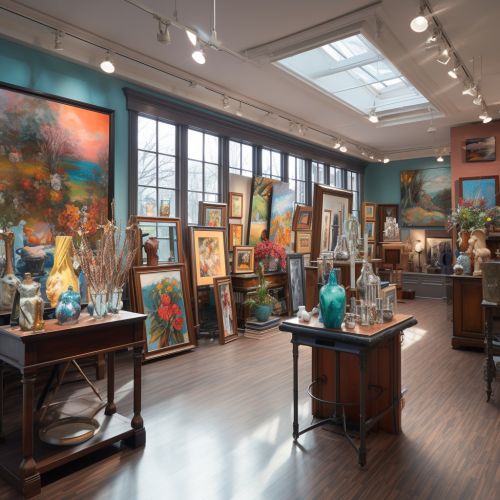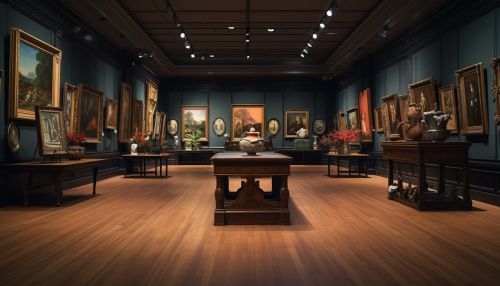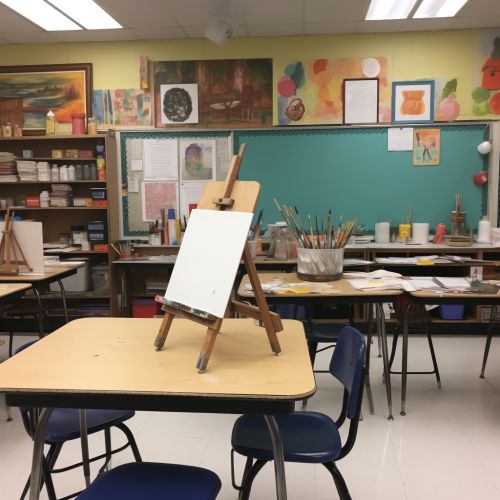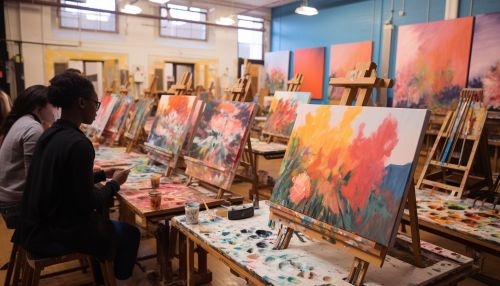The Science of Human Cognitive Styles in Visual Arts
Introduction
Human cognitive styles in visual arts refer to the diverse ways in which individuals perceive, interpret, and appreciate visual art. The field is a multidisciplinary area of study that combines aspects of psychology, neuroscience, art history, and aesthetics. This article delves into the science behind these cognitive styles, exploring how they influence our interaction with visual art.


Cognitive Styles
Cognitive styles are the preferred ways in which individuals process information. They are influenced by various factors, including personality traits, cultural background, and neurological makeup. In the context of visual arts, cognitive styles can significantly impact how a person perceives and interprets artwork.
Field Dependence-Independence
One of the most studied cognitive styles in psychology is field dependence-independence. Field-dependent individuals tend to perceive an entire field as a whole, while field-independent individuals are more likely to focus on individual parts. This cognitive style can influence how one views art. For example, a field-dependent person might appreciate the overall composition of a painting, while a field-independent person might focus on specific details.
Holistic-Analytic Thinking
Holistic-analytic thinking is another cognitive style that plays a role in art perception. Holistic thinkers tend to view objects as a whole, while analytic thinkers break down objects into their constituent parts. This cognitive style can influence how one interprets an artwork's meaning. For instance, a holistic thinker might interpret a painting based on its overall theme or mood, while an analytic thinker might derive meaning from individual symbols or elements within the painting.


Neuroscience and Art Perception
Neuroscience provides valuable insights into the biological basis of cognitive styles in visual arts. Neuroimaging studies have shown that different brain regions are activated when individuals engage with art, reflecting the diverse cognitive processes involved in art perception.
Visual Processing
The primary visual cortex, located in the occipital lobe of the brain, is the first cortical area to process visual information. It is responsible for basic visual functions such as edge detection and color perception. However, the interpretation of visual art involves more complex cognitive processes, which engage other brain regions.
Emotional Processing
The amygdala, a small almond-shaped structure in the brain, plays a crucial role in emotional processing. It responds to emotionally charged stimuli, including art. The amygdala's response to art can vary depending on an individual's cognitive style. For example, individuals who are more emotionally responsive may have a stronger amygdala response to emotionally charged artwork.


Cultural Influences on Art Perception
Culture can significantly influence cognitive styles in visual arts. Cultural differences can shape how individuals perceive and interpret art, as well as their aesthetic preferences.
Cultural Framing
Cultural framing refers to the way culture shapes our perception and interpretation of the world. In the context of art, cultural framing can influence how we perceive and interpret artwork. For example, individuals from Western cultures, which emphasize individualism, might focus more on individual elements within an artwork, while individuals from Eastern cultures, which emphasize collectivism, might focus more on the overall composition.
Aesthetic Preferences
Cultural influences can also shape aesthetic preferences. For example, research has shown that individuals from different cultures have different preferences for color, composition, and style in visual art. These cultural differences in aesthetic preferences reflect the diverse cognitive styles across cultures.


Implications for Art Education
Understanding cognitive styles in visual arts has important implications for art education. It can inform teaching strategies and curriculum design, helping to create a more inclusive and effective learning environment.
Teaching Strategies
Educators can tailor their teaching strategies to accommodate different cognitive styles. For example, they can provide a balance of holistic and analytic activities, catering to both holistic and analytic thinkers. They can also incorporate activities that engage different brain regions, such as emotional processing activities for students who are more emotionally responsive.
Curriculum Design
In curriculum design, understanding cognitive styles can help educators create a more inclusive curriculum. For example, they can include artworks from different cultures to cater to diverse cultural backgrounds and cognitive styles. They can also design assignments that allow students to express their unique cognitive styles, fostering creativity and individuality.


Conclusion
The science of human cognitive styles in visual arts is a complex and fascinating field. It involves the interplay of psychology, neuroscience, art history, and aesthetics, and is influenced by a multitude of factors, including personality traits, cultural background, and neurological makeup. Understanding these cognitive styles can enrich our appreciation of visual art and inform practices in art education.
